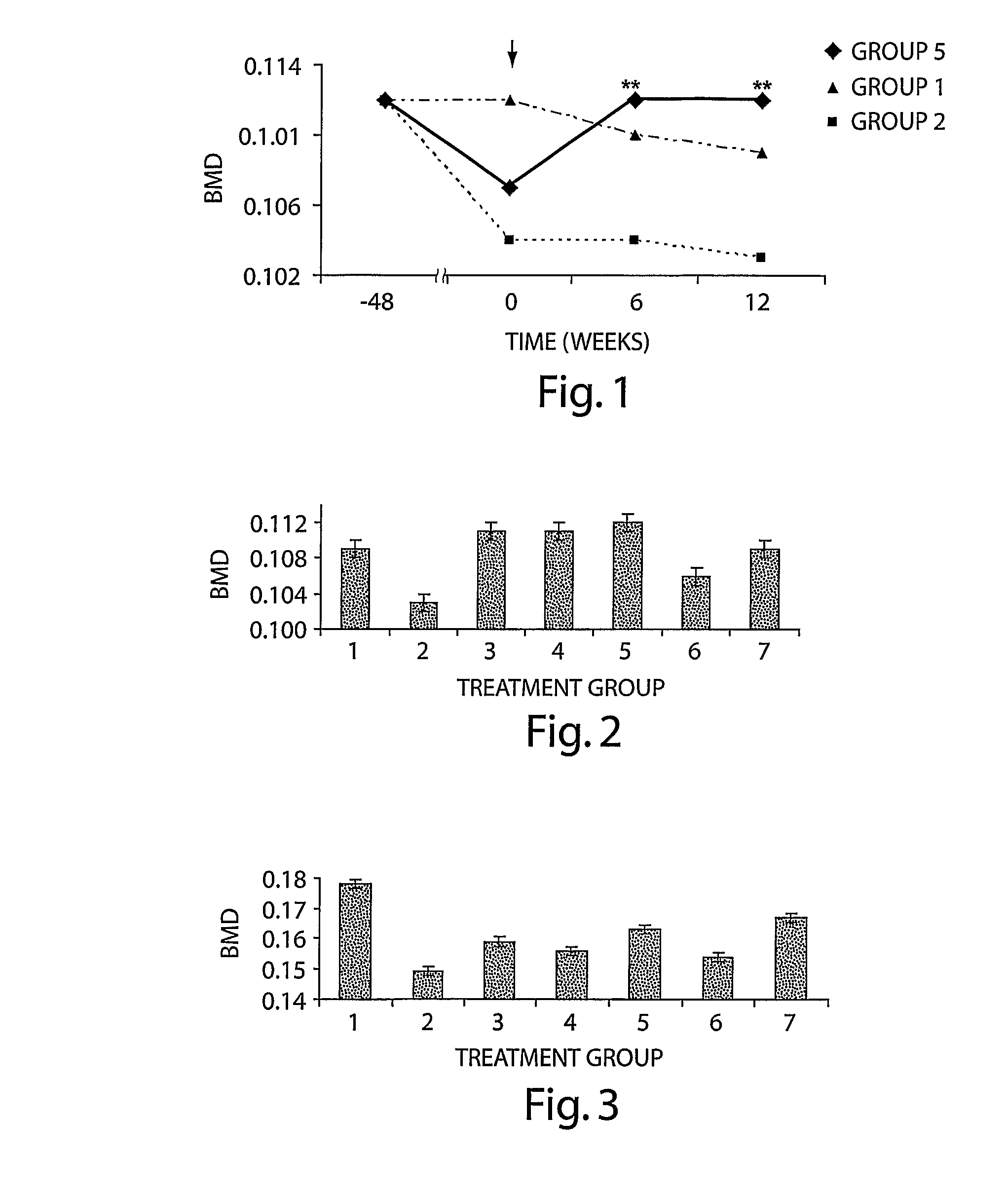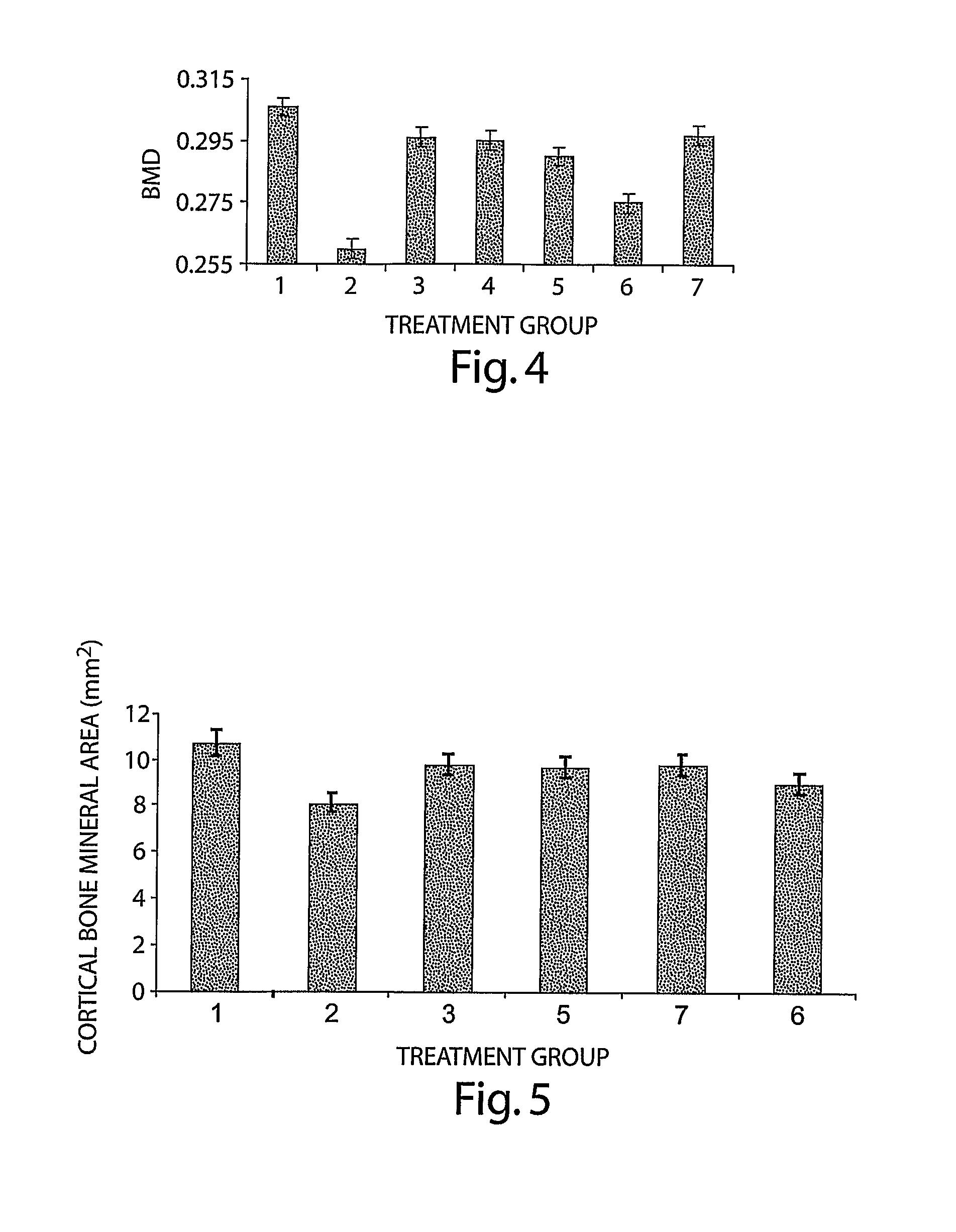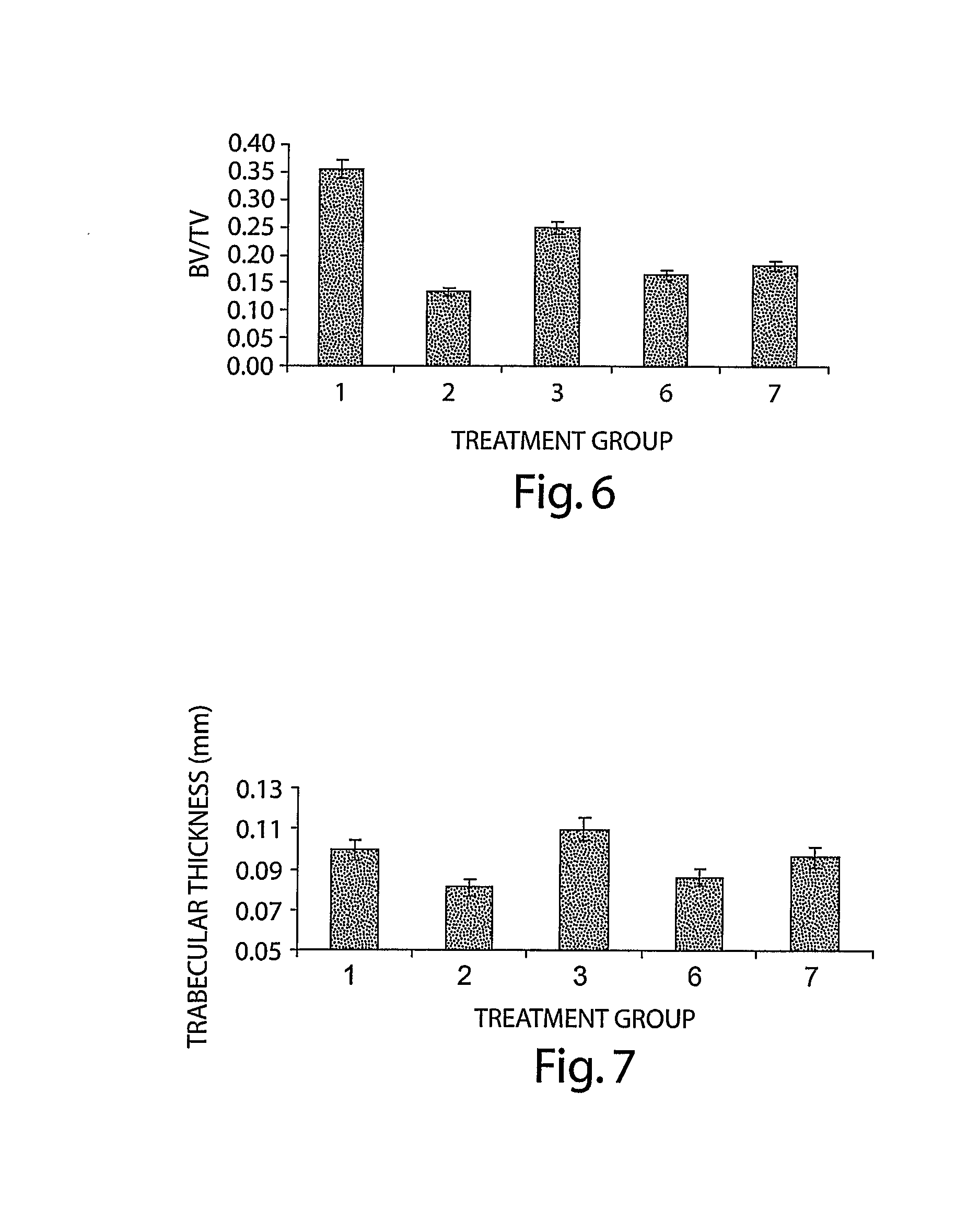Oral Formulations Comprising Bone Morphogenetic Proteins For Treating Metabolic Bone Diseases
a technology of morphogenetic proteins and oral administration, which is applied in the direction of osteogenic factors, peptide/protein ingredients, drug compositions, etc., can solve the problems of increasing the problem of bmp degradation, prone to breakage, and fragile bones in the wrist, spine and hips, so as to prevent or inhibit the proteolytic activity of gastric pepsin, prevent or degrade the bmp, and prevent the degradation of bmp
- Summary
- Abstract
- Description
- Claims
- Application Information
AI Technical Summary
Benefits of technology
Problems solved by technology
Method used
Image
Examples
example 1
Dose Response and Efficacy of Intravenously Administered Bone Morphogenetic Protein-6 (BMP-6) in Aged Ovariectomized Rats
[0109] This study shows that intravenous administration of BMP-6 is effective in promoting bone growth in a rat model of osteoporosis.
Materials and Methods
[0110] Animals and study protocol. One hundred sixty (160), 4 months old Sprague-Dawley female rats were used in this study. Animals weighed approximately 300 grams. The rats were kept in standard conditions (24° C. and 12 hour / 12 hour light / dark cycle) in 20×32×20 cm cages during the study. All animals were allowed free access to water and pelleted commercial diet (Harlan Teklad, Borchen, Germany) containing 1.00% calcium, 0.65% phosphorus, and 2.40 KIU of Vitamin D3 per kilogram. Estrogen was administered as estradiol. Recombinant BMP-6 was prepared from transfected CHO cells following standard procedures.
[0111] On Days-14 and -4, animals received calcein green labeling regimen (15 mg / kg, intraperitoneall...
example 2
Effect of Lower Doses of BMP-6 on Bones in Aged, Ovariectomized Rats
[0132] Seven-month old Sprague-Dawley rats were ovariectomized (OVX), as above, and were left for approximately 20 months to lose bone mineral density (BMD). Thus, therapy was initiated 72 weeks following ovariectomy, at the age of 2 years and 1 month and continued for 3 months, until the sacrifice for analysis. Animals were divided into following groups:
Group 1.SHAM (n = 8)Group 2OVX control (n = 8)Group 3OVX treated with BMP-6, 10 μg / kg, 3 × week (n = 8)Group 4OVX treated with BMP-6, 10 μg / kg, 1 × week (n = 12)Group 5OVX treated with BMP-6, 1 μg / kg, 3 × week (n = 12)
[0133] BMD in vivo. In vivo BMD was monitored every 6 weeks. At 6 weeks following the initiation of therapy, all BMP-6 treated animals showed statistically significant higher BMD values of hind limbs as compared to OVX control animals, even having higher BMD than sham animals. There were no statistically significant differences between BMP-6 treated...
example 3
Duodenal Absorption and Biodistribution of BMP-6 Labeled with 99m Technetium
[0135] This study shows that the efficacy of orally administered BMP-6 for inducing bone formation in an individual can depend on the age of the individual. In particular, bone morphogenetic proteins degrade under the influence of gastric enzymes that are known to be present in adults, but typically not in infants. Accordingly, this study was undertaken to compare the quantity of orally (via mouth) and duodenally administered BMP absorbed in infant and adult individuals. Specifically, the absorption of labeled BMP-6 was compared rats that were 3 days old, 15 days old, 45 days old, and 75 days old.
[0136] BMP-6 labeling. Mature BMP-6 was chelated with mercaptoacetylthreeglycin (MAG3). BMP-6-MAG3 complex was labeled with radioactive 99m Technetium-pertechnetate (99mTc). Chromatography revealed that more than 97% of 99mTc was ligated to the complex.
[0137] Animals and therapeutic protocol. Animals were divided...
PUM
| Property | Measurement | Unit |
|---|---|---|
| Volume | aaaaa | aaaaa |
| Mass | aaaaa | aaaaa |
| Acidity | aaaaa | aaaaa |
Abstract
Description
Claims
Application Information
 Login to View More
Login to View More - R&D
- Intellectual Property
- Life Sciences
- Materials
- Tech Scout
- Unparalleled Data Quality
- Higher Quality Content
- 60% Fewer Hallucinations
Browse by: Latest US Patents, China's latest patents, Technical Efficacy Thesaurus, Application Domain, Technology Topic, Popular Technical Reports.
© 2025 PatSnap. All rights reserved.Legal|Privacy policy|Modern Slavery Act Transparency Statement|Sitemap|About US| Contact US: help@patsnap.com



